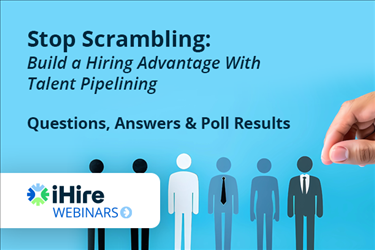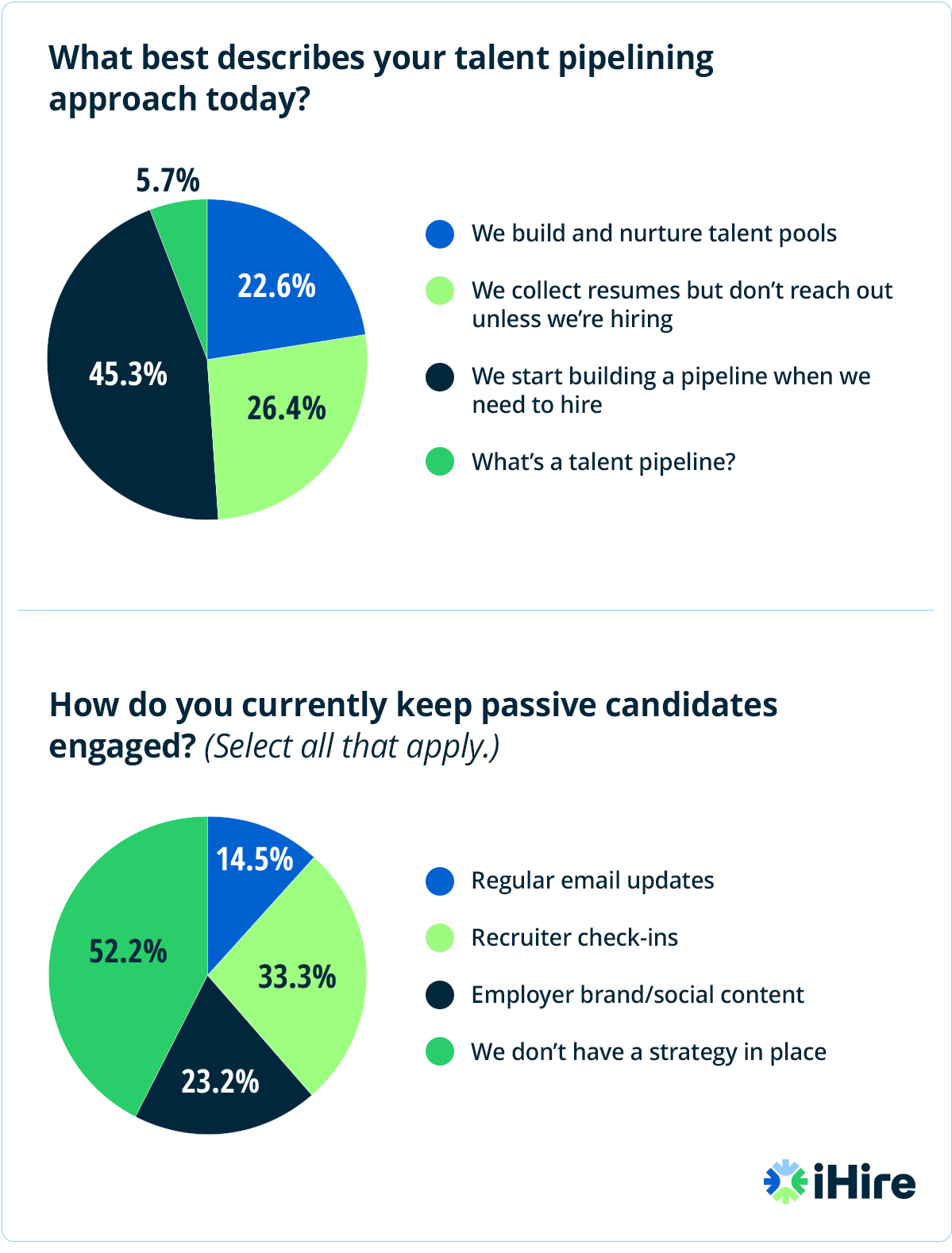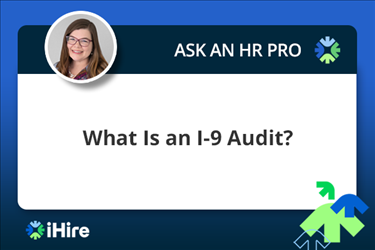- Employer Resources
- |
- Last Updated: June 20, 2025

Stop Scrambling: Build a Hiring Advantage With Talent Pipelining [Questions, Answers & Poll Results]
1. What’s the best way to ask employees for referrals when we don’t have a referral system?
Answer: Keep it simple and direct. Just explain what roles you need help with, make it easy for people to submit names, and offer a reward they actually care about. Even without an internal career site, a shared doc or quick email works fine.
- Send out a quick email or Slack asking for referrals with a link to open roles
- Offer a reward that feels worthwhile (bonus, gift cards, extra PTO, etc.)
- Follow up and thank people, even if their referral isn’t hired
Recommended Reading:
Create an Employee Referral Program in 5 Steps
2. How often should we reach out to candidates without being annoying?
Answer: A good rule of thumb is to stay in touch every couple of weeks with updates or value (like a tip or relevant job). If you’re just checking in with no new info, it feels spammy. Keep it personal and purposeful.
- Touch base every 10–14 days with something useful
- If you haven’t heard back after three or four messages, pause the outreach
- Use email first, then try a text if they haven’t responded
Recommended Reading:
How to Use AI to Prevent Candidate Ghosting
3. When should I take someone out of my pipeline?
Answer: If they’ve stopped replying, changed jobs, or clearly said no? Then it’s okay to let them go. You can always re-engage later, but don’t let dead leads clog your list.
- Remove candidates who ghost after three or more messages
- Archive folks who clearly say they’re not interested
- Revisit every six months to refresh or remove old contacts
4. How do we know if our recruiting spend is actually working?
Answer: Start small and track how many quality candidates come from each channel. If you’re not seeing hires or strong leads from a source, it’s time to shift your budget. A spreadsheet is better than guessing!
- Track cost per application and hire per source
- Check monthly which job boards or ads perform best
- Cut what isn’t working and double down on top sources
Recommended Reading:
11 Recruiting and HR Metrics You Should Be Tracking
5. I hire for a niche field. Where should I look for qualified people?
Answer: For niche hiring, go where your candidates already hang out, like industry-specific boards, local schools, and professional groups. General job boards rarely have the depth you need.
- Use niche sites (like iHireDental, iHireTherapy, iHireConstruction, etc.). iHire has 57 niche talent communities to choose from.
- Reach out to recent grads or schools in your field
- Join local Facebook or LinkedIn groups in your niche

6. We use an ATS for recruiting. Would iHire’s pipelining tools replace it or work with it?
Answer: It depends on what you’re missing. If your ATS handles the basics but you want to improve sourcing or pipelining, you may want to layer on another tool. If it’s not working out, it might make sense to switch.
- Make a list of what your current ATS does well vs. what’s missing
- See if integration with new tools is possible
- Test alternatives on hard-to-fill roles before making a full switch
Recommended Reading:
iHire ATS Integration: An Easy, Fast & Secure Way to Hire Qualified Talent
7. We can’t take photos or videos at our job sites. How can we still showcase our culture?
Answer: Use what you can – employee quotes, outside-office group shots, or “day in the life” writeups. You don’t need footage from inside secure locations to give candidates a sense of your team.
- Film team intros or testimonials off site
- Share stories or blog posts written by employees
- Use simple graphics to show what your team values
Recommended Reading:
How to Create, Build & Shape Your Company Culture
Connect With Great Hires You Won't Find Anywhere Else
Create Your Account Today

We Value Your Privacy
8. What info should we be saving in our talent pipeline?
Answer: Keep it useful – name, contact info, what role(s) they’re a fit for, when you last talked, and how interested they seemed. Tagging by skill or location makes future searches faster.
- Add skills, job interest, and availability
- Keep notes on conversations or outreach attempts
- Tag by things like location, certifications, or job type
9. How many people should we have in our pipeline?
Answer: There’s no magic number, but try to have several solid candidates per open role. That gives you flexibility without being overwhelmed. For hard-to-fill jobs, keep an extra passive candidate list ready.
- Aim for three to five active candidates per open position
- Keep a bench of five to 10 passive prospects per key role
- Adjust as you learn which roles are slow vs. fast to fill
10. What’s the best way to reach out to candidates – call, email, or text?
A: Start with email – it’s low pressure. If they don’t reply and the role is urgent, follow up with a quick text. Use phone calls once there’s interest or for more in-depth convos.
- Start with a personalized email
- Send a short follow-up text after a few days
- Call only when needed or if you already have a connection
Recommended Reading:
Text Message Etiquette: 5 Tips for Texting Job Candidates Effectively
For more advice on creating a talent pipeline, view the on-demand webinar, “Stop Scrambling: Build a Hiring Advantage With Talent Pipelining.”
RELATED RESOURCES
Hiring? You're in the Right Place.
- Reach unique talent: 51% of our candidates aren't using other job boards
- Connect your ATS and get 6x more applications with iHire's apply process
- Get matching candidate resumes sent straight to your inbox
We Value Your Privacy


![Skills Over Degrees: The Future of Hiring [Video Webinar]](https://p-gpb8fhd4b9fbh6fy.z01.azurefd.net/cms/2f6c3996-55d2-41a7-92cd-801a93177d31/4adbd698-ab4c-4e81-9823-8c8cfade1f76-md.png)

